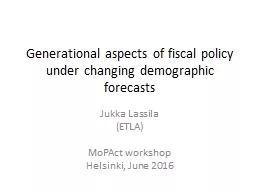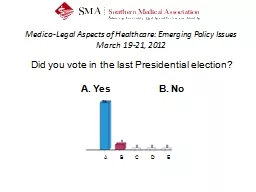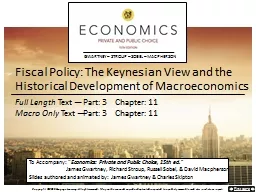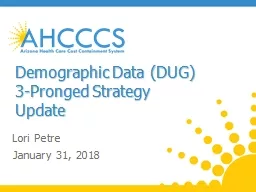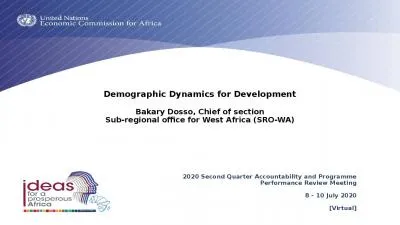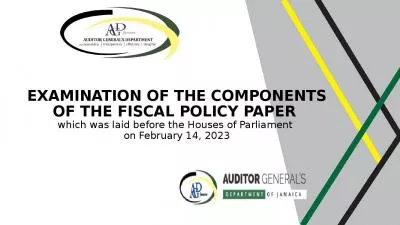PPT-Generational aspects of fiscal policy under changing demographic forecasts
Author : missroach | Published Date : 2020-06-26
Jukka Lassila ETLA MoPAct workshop Helsinki June 2016 Motivation and aim In an economy with ageing population we analyze longrun fiscal strategies with
Presentation Embed Code
Download Presentation
Download Presentation The PPT/PDF document "Generational aspects of fiscal policy un..." is the property of its rightful owner. Permission is granted to download and print the materials on this website for personal, non-commercial use only, and to display it on your personal computer provided you do not modify the materials and that you retain all copyright notices contained in the materials. By downloading content from our website, you accept the terms of this agreement.
Generational aspects of fiscal policy under changing demographic forecasts: Transcript
Download Rules Of Document
"Generational aspects of fiscal policy under changing demographic forecasts"The content belongs to its owner. You may download and print it for personal use, without modification, and keep all copyright notices. By downloading, you agree to these terms.
Related Documents

